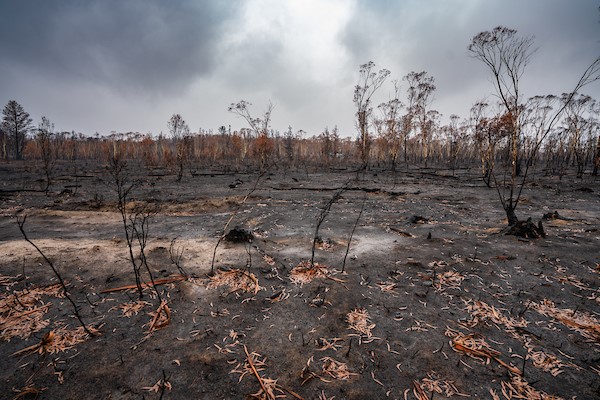An El Niño summer promises hotter and drier conditions for much of Australia, and experts from the Australian National University (ANU) say we must rethink how we measure the impact that bushfires and other extreme weather events have on our mental health and wellbeing.
“What we show in this study,” lead author Dr Zoe Leviston, from the ANU School of Medicine and Psychology, said, “is that the direct impacts of the bushfires are not the only factor that determines mental health and wellbeing outcomes – it’s also the psychological stress, both acute and more subtly, of experiencing the loss of cherished environments, ecosystems and wildlife.”
The researchers say that the mental health impacts of weather-related disasters extend far beyond those directly impacted by these events – they can also impact people living thousands of kilometres away, the researchers say.
Authorities also most likely underestimated how the mental health and wellbeing of many Australians declined because of the devastating 2019-2020 Black Summer bushfires.
ANU researchers surveyed more than 2,000 residents in the ACT and surrounding regions in the aftermath of the Black Summer fires to determine their level of exposure to the fires, using a bushfire impact score. This helped gauge residents’ physical loss and also the emotional toll.
Almost all participants reported the health consequences of suffering smoke inhalation, but about 60 per cent of respondents said the bushfires directly impacted them. They may have had to evacuate, lost property, or their travel might have been impacted.
“There was a lot of media coverage which featured devastating imagery of koalas and other Australian wildlife perishing in the fires,” Dr Leviston said. “That can cause emotional and psychological distress for a lot of Australians.
“The negative impacts of bushfires can be profoundly and acutely distressing for people with a deep connection to the land, and for those who directly experience loss.”
A second nation-wide survey of more than 1,400 people six months after the Black Summer fires found many Australians reported a strong sense of loss, after the fires claimed dozens of lives, burnt more than 24 million hectares of land, and killed or displaced nearly three billion animals.
“You could be on the other side of the continent witnessing the devastation and that solastalgic response to environmental destruction is enough to negatively impact your mental health,” Dr Leviston said.
Solastalgia is the distress we feel as a result of unwanted environmental change, or in this case, destruction of the environment.
Coined by Australian environmental philosopher Glenn Albrecht, solastalgia is the homesickness we experience while still at home. It is also linked to our emotional connection with the land we live on.
“Solastalgia is often deeply connected to a location or place, but how we’ve come to understand place is changing,” co-author Associate Professor Aparna Lal, from the National Centre for Epidemiology and Population Health, said.
“We’ve often understood place as something within a geographical boundary, such as our state or territory, but increasingly it’s more understood not just as a geographical construct but as a sociocultural or environmental construct as well, especially as the diffuse impacts of climate change grow.
“In terms of preparedness for future events, we need to start thinking more about rolling out mental health resources more broadly in regional and remote communities to be able to account for solastalgia and the long-term mental health consequences caused by extreme weather.”
The authors say that policymakers and mental health organisations should be more aware of how solastalgia affects peoples’ mental wellbeing, and how we distribute mental health support services across the country, particularly as climate change-driven disasters become more frequent and intense.
“Traditionally, the way we assess the damage caused by bushfires is thought of in terms of direct physical impact, such as how many people had to evacuate, how many people lost property, and how many people lost their lives, which is all important information to capture,” Dr Leviston said.
“But importantly, people not directly impacted by a bushfire event also experience solastalgia and poorer mental health outcomes following bushfires. By not taking solastalgia into account, we are being very conservative in our estimates of bushfire impact on peoples’ mental health and wellbeing.
“Given the less visible impacts of disasters such as solastalgia, climate scientists and the health sector should work together to identify areas where compounding disasters are more likely to occur and deploy resources accordingly.
“While solastalgia itself is not a mental illness, the experience is distressing enough that it is capable of causing a real and diagnosable illness.”
The research is published in the Journal of Environmental Psychology.



